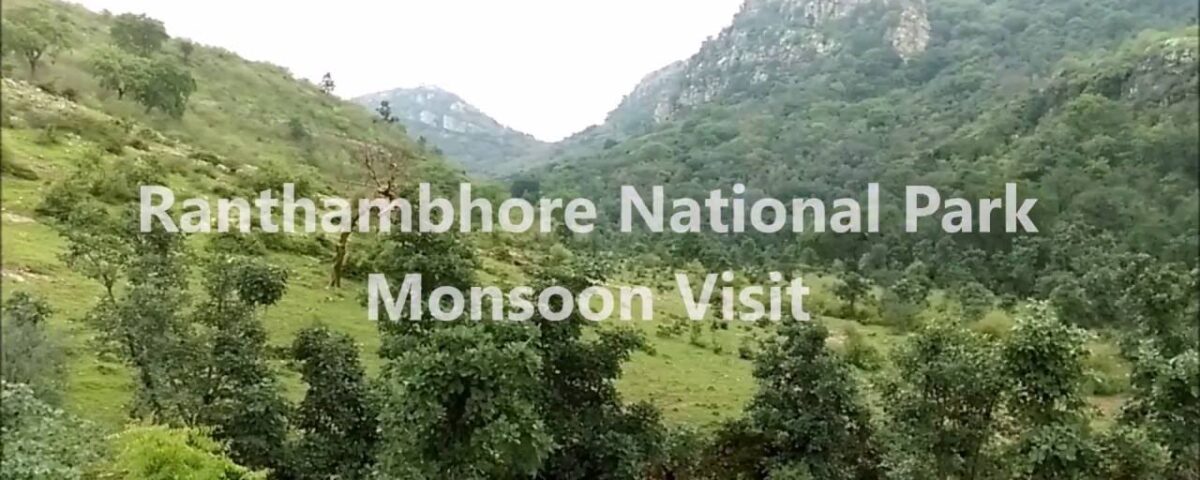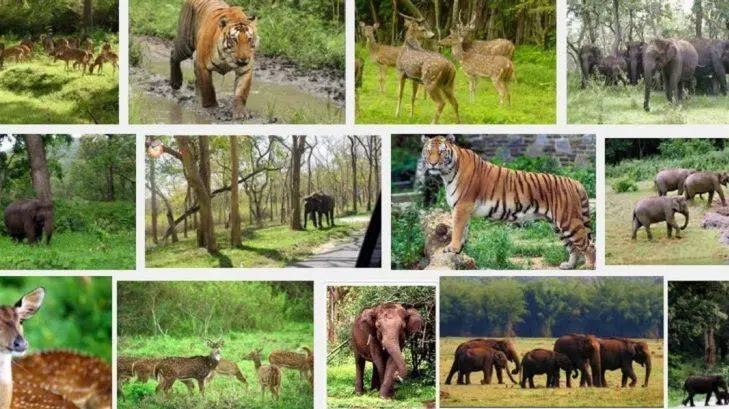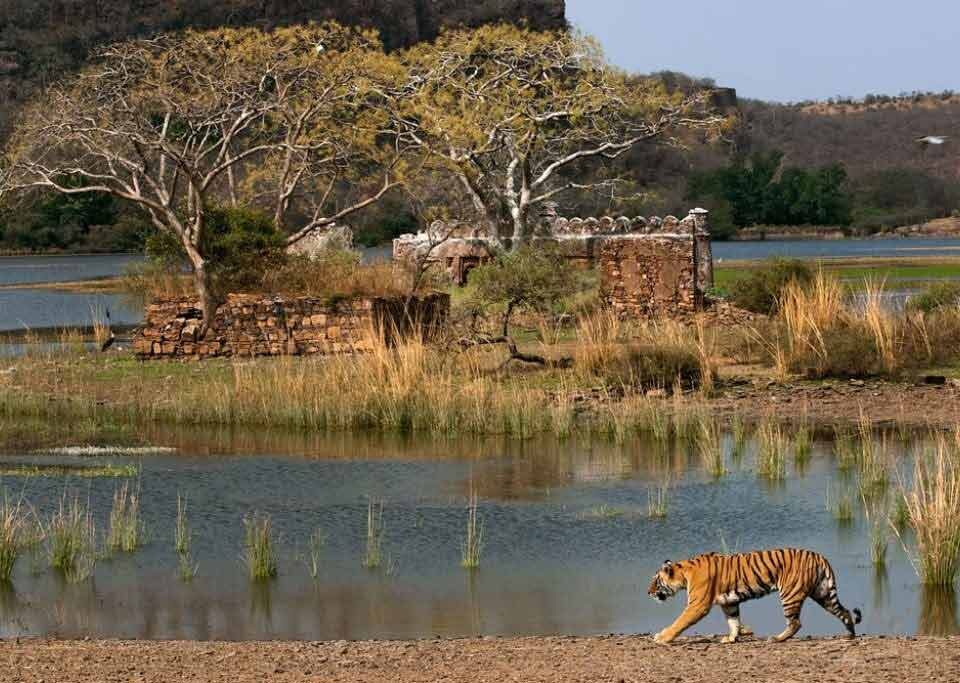Why Ranthambore National Park Shines During the Monsoon

Padam Talao: A Hidden Gem in Ranthambore
July 24, 2024
Heritage and Nature Places to Visit in Ranthambore
July 23, 2025Ranthambore National Park, one of India’s most celebrated wildlife sanctuaries, is a stunning canvas of natural beauty, majestic wildlife, and ancient ruins. While the park is popular all year round, Ranthambore in monsoon unveils a side of the reserve that’s often overlooked: a lush green paradise, brimming with life, waterfalls, and an ethereal mist that transforms the rugged terrain into a dreamscape.
A Glimpse into Ranthambore National Park
Located in the Sawai Madhopur district of southeastern Rajasthan, Ranthambore is known for its thriving population of Bengal tigers. Set against the backdrop of the Aravalli and Vindhya ranges, the park spans 1,334 square kilometres and is dotted with lakes, cliffs, dry deciduous forests, and open meadows. The park also hosts the famous Ranthambore waterfall, numerous ruins, and the historic Ranthambore Fort, a UNESCO World Heritage site.
Despite the perception that monsoon might hinder wildlife spotting, the truth is quite the opposite. Ranthambore in monsoon offers a unique and dramatic transformation, making it one of the best off-season destinations for nature enthusiasts and photographers.
Why Visit Ranthambore in Monsoon?
1. Lush Green Landscapes & Waterfalls
As the monsoon rain breathes life into the dry and arid land, the park transforms into a lush jungle paradise. The Ranthambore waterfall, a hidden gem within the park, becomes a roaring spectacle. This seasonal waterfall, fed by the heavy rainfall, attracts wildlife and birds, offering spectacular photo opportunities and a tranquil experience for visitors.
Monsoon rejuvenates the streams and lakes within the park, and the sight of wild animals playing or resting by these water bodies amidst the mist and greenery is breathtaking. For those who crave a serene escape into nature, Ranthambore in monsoon is an unparalleled experience.
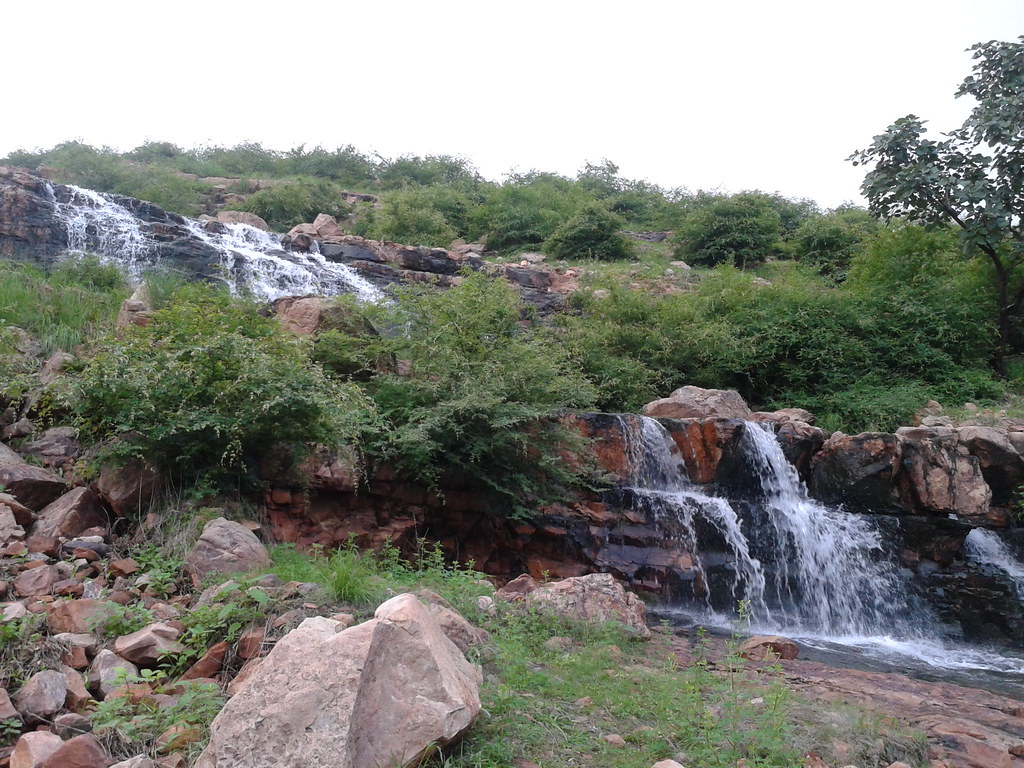
2. Off-Season Perks for Tourists
Monsoon months, especially Ranthambore in August, fall within the park’s off-season for tourism. This means fewer crowds, discounted hotel tariffs, and more personalised attention from tour guides. You can explore the surrounding attractions, such as the Ranthambore waterfall, fort, and local villages at your own pace, without the usual rush.
Though the core zone of the park is closed from July to September due to heavy rain and the breeding season for animals, the buffer zones remain open. Safarisin these zones can be rewarding, as the animals often stray close to the boundaries. Ranthambore tourism is now evolving to offer monsoon-specific tours that focus on birdwatching, flora, and cultural immersion.
3. Birdwatcher’s Paradise
Monsoon is a magical time for birdwatching in Ranthambore. The park sees a burst of avian life, with migratory and resident birds nesting, feeding, and chirping in the rain-washed foliage. The region around the Ranthambore waterfall and Padam Lake becomes particularly active with bird calls. Kingfishers, peacocks, egrets, drongos, and even Indian pitta make appearances, offering endless opportunities for nature lovers.
Ranthambore in monsoon also brings out amphibians, butterflies, and exotic insects that are otherwise hidden during dry seasons, enriching the biodiversity experience.
Key Attractions to Explore During Monsoon
1. Ranthambore Waterfall
This lesser-known wonder comes alive during the rainy season. Located amidst the forest, the Ranthambore waterfall is a seasonal delight, with water gushing over rocky outcrops and pooling into serene basins. It’s perfect for a tranquil escape and a picnic (with forest department permission). The trail to the waterfall is adorned with monsoon blooms and teeming with butterflies.
Repeated visits during the monsoon will show the waterfall at different volumes and moods—sometimes thunderous, other times quietly mystical. Any trip that focuses on Ranthambore tourism during this time must include this natural gem.
2. Ranthambore Fort
Towering over the park, this 10th-century fortress is a historical treasure. Monsoon mists wrap the fort in a mysterious charm, while the greenery provides a stark contrast to the stone walls. Views from the top are surreal, with sweeping vistas of the verdant park and shimmering lakes below.
During Ranthambore in monsoon, the fort becomes even more picturesque. Langurs and peacocks roam freely across its courtyards, and it becomes a peaceful spot to absorb the region’s regal and natural legacy.
3. Raj Bagh Ruins and Lakes
Though access may be limited due to rain, the buffer zones still allow glimpses of ancient Raj Bagh ruins nestled among flooded meadows and shimmering lakes. These ruins become surreal backdrops as mist dances through broken arches, and sambar deer graze nearby. This scenery is exclusive to Ranthambore in monsoon and remains etched in the memory of visitors.
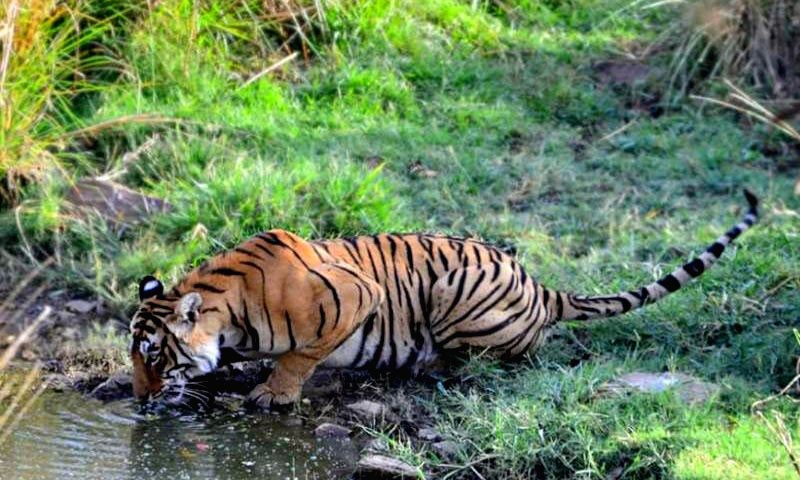
Ranthambore in August: What to Expect
Ranthambore in August is characterised by frequent showers, lush growth, and unpredictable weather. While the core zones are shut, Zones 6 to 10 (buffer areas) remain open. These zones are less explored and offer fantastic chances of spotting sloth bears, leopards, hyenas, and marsh crocodiles.
Tips for travellers during August:
- Carry waterproof gear and insect repellent.
- Book accommodation near open zones for easier safari access.
- Combine safaris with cultural experiences like village tours or local cooking classes.
- Check road and weather conditions before travel, especially around the Ranthambore waterfall area.
Safari Tips for Monsoon Travellers
Although tiger sightings may reduce due to thick vegetation, Ranthambore in monsoon is still a rewarding safari experience. Here are a few tips:
- Binoculars and telephoto lenses are must-haves, especially for birders.
- Opt for canter safaris if available, as they handle wet tracks better.
- Choose early morning safaris, when the sky is clear and wildlife is active.
- Be patient: sightings may take longer, but they’re often more magical in misty backdrops.
Accommodation and Eco-Lodges
Monsoon is also a great time to explore eco-lodges and sustainable stays that focus on local engagement and natural immersion. These places offer guided walks, monsoon treks, and traditional Rajasthani cuisine.
Many resorts offer Ranthambore tourism packages with discounts during monsoon. Since demand is low, you may enjoy upgrades, private tours, or special excursions like photography walks near the Ranthambore waterfall.
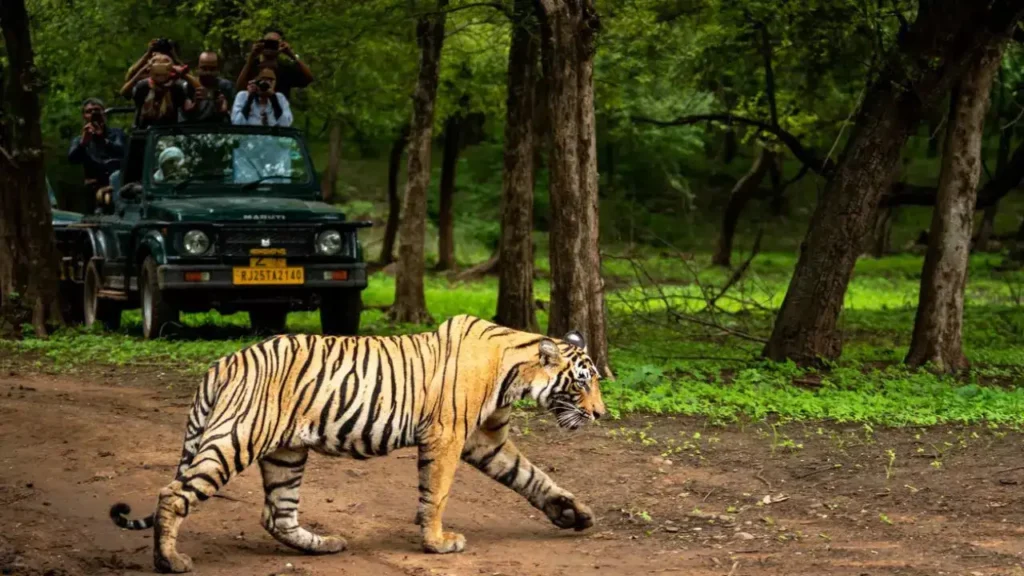
Cultural Experiences in the Monsoon
While wildlife safaris are a major draw, monsoon also brings an opportunity to connect with the local culture. Visit nearby villages and markets for handmade artefacts, enjoy traditional folk music, and engage with local artisans. You’ll also find temples and stepwells that brim with rainwater, offering unique photo opportunities.
Especially during Ranthambore in August, festivals like Teej and Raksha Bandhan bring colour and joy to the region. Tourists can witness folk performances and savour festive sweets like ghevar and malpua.
Conservation Efforts and Responsible Travel
Ranthambore in monsoon is not just about scenic beauty—it is also a critical time for conservation. The rains ensure better forest cover, which supports the growth and health of all species. It’s breeding season for many animals, which is why the core zone remains closed.
As responsible travellers:
- Avoid littering, especially near the Ranthambore waterfall and fort.
- Do not play loud music or feed animals.
- Respect all park rules and guidelines.
- Support local businesses and conservation projects.
Final Thoughts
While most travellers think of Ranthambore as a dry, winter destination for tiger sightings, visiting Ranthambore in monsoon unveils a whole new dimension. It’s a time of revival, mystery, and serenity. From the rejuvenated Ranthambore waterfall to the mist-laden fort and from the tranquil buffer zone safaris to bird-filled mornings, monsoon turns the national park into a living painting.
Ranthambore tourism during monsoon may be unconventional, but it offers rich rewards: solitude, nature in full bloom, and the chance to witness wildlife in its most intimate, unguarded moments.
Whether you’re a photographer, a nature lover, a cultural explorer, or a seeker of solitude, Ranthambore in monsoon is a refreshing alternative to the usual tourist rush. Embrace the rains, pack your monsoon boots, and get ready for an adventure that lingers long after the clouds clear.
To make the most of your stay, choose the best resort in Ranthambore that offers a blend of comfort, proximity to the park’s open zones, and monsoon-friendly experiences like nature walks, wildlife talks, and heritage excursions. Resorts such as Ranthambore Tiger Resort are widely regarded as among the best resorts in Ranthambore, offering luxury and eco-consciousness amid nature’s raw beauty.
Let your journey into the wild be matched with a stay that reflects the serenity and spirit of Ranthambore in monsoon — where even the clouds seem to pause and listen.

